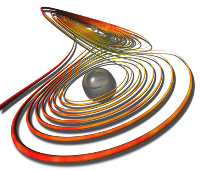
Probabilistic distribution models like Gaussian mixtures have shown great potential for improving both the quality and speed of several geometric operators. This is largely due to their ability to model large fuzzy data using only a reduced set of atomic distributions, allowing for large compression rates at minimal information loss. We introduce a new surface model that utilizes these qualities of Gaussian mixtures for the definition and control of a parametric smooth surface. Our approach is based on an enriched mesh data structure, which describes the probability distribution of spatial surface locations around each vertex via a Gaussian covariance matrix. By incorporating this additional covariance information, we show how to define a smooth surface via a nonlinear probabilistic subdivision operator based on products of Gaussians, which is able to capture rich details at fixed control mesh resolution. This entails new applications in surface reconstruction, modeling, and geometric compression.
Demo Code
A python demo for Gaussian-Product subdivision and Gaussian Inference can be found on GitHub.
Info
Proceedings of SIGGRAPH 2019
ACM Transaction on Graphics
38(4), 35:1-35:11
doi: 10.1145/3306346.3323026
License: Open Access (CC-BY)
